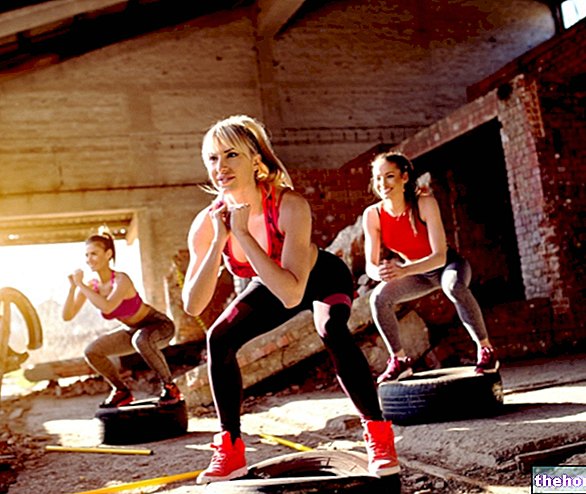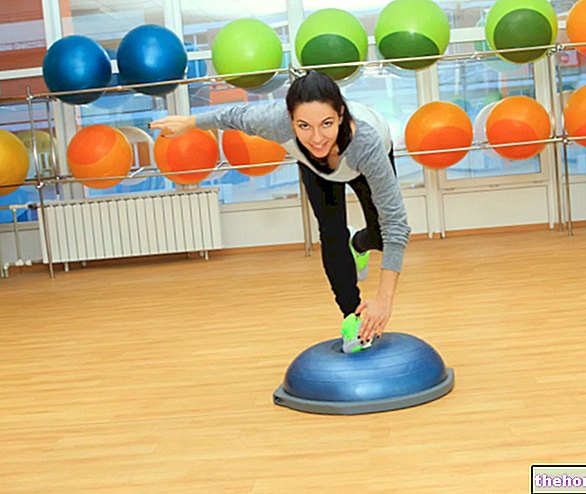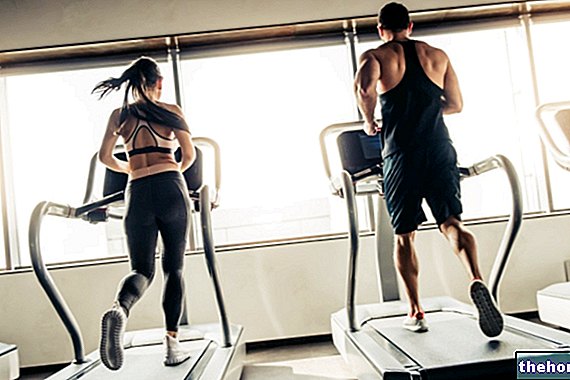What is Plyometrics
The term Plyometry comes from the Greek and means "to increase the measure / distance". In the study of human movement, in particular, this term describes a complex type of exercise.
Plyometrics and plyometric executions were introduced by the United States Fred Wilt, which in 1975 brought them to the attention of the world sports community, describing how 'a movement characterized by the succession of a concentric contraction to an eccentric one can be a very useful tool in the development of some motor-conditional skills (basic and composite)'.

How does it work
According to the principles of plyometrics, in a FAST eccentric contraction (muscle lengthening) the serial functional units (tendons and cross-bridges - actino-myosin bridges) store energy to release it (like an ELASTIC) in addition to the subsequent concentric contraction (shortening of the muscle). The result is a contraction that makes use of both the energy stored in the eccentric phase and the energy released in the concentric active contraction.
NB. Plyometrics is a technique essential in the training of sports that require an increase of: reactive strength, elastic strength and explosive strength (in addition to the combinations of all three), such as fast runs, jumps and throws in athletics.
Practical example
We assume that the mind and the human body already possess the tendency and the instinct to perform more effective executions and movements than others; just think of a child who tries to cross a puddle with a leap: he squats quickly, accumulating elastic energy and, with a swing of his arms, exploits his reactive, elastic and explosive force reaching the high side of the water, and cushioning the landing by flexing the legs.
Plyometrics, with all due respect to its discoverer who revealed its existence, has always been an integral part of human movement, so much so that, in some exercises with overloads for pure STRENGTH or for HYPERTROPHY, it contributes to increase the ERRORS of execution. How many times, in the muscle gyms, have we witnessed (RIGHTLY) the lectures of the instructors who recommend: <<When performing the squat or press, do not perform the negative phase too quickly by closing the joints in "bounce"! It can be extremely dangerous and favor the onset of ligament, tendon and muscle injuries ... without considering that, to train muscle mass, the execution MUST be as SLOW as possible!>>.
On the other hand, perceiving greater contractile efficacy and efficiency (... and leaving the joints the passive task of supporting the eccentric / negative phase of the movement), any young athlete is inclined to neglect the tasks of performing the exercise, bouncing (recklessly!) to reduce fatigue, accumulate elastic energy and free it in the next performance; a gruesome practice to say the least.
If nothing else, the "rebounding tendency" can still be exploited through the "execution of plyometrics exercises; these executions, which I repeat, have nothing to do with strength or hypertrophy protocols, WHILE AVOIDING BOUNCING ON THE JOINTS, allow to promote elastic capacity by means of rapid sequences of eccentric-concentric dynamic contraction. A CLASSIC plyometric exercise aimed at developing the elastic strength of the lower limbs for the fast track and field runner is the CONTINUOUS ½ SQUAT JUMP. Let's see how it is performed:
- The starting position is erect, with the feet shoulder-width apart and the toes turned outwards by about 30 °; a more or less heavy barbell (which passes behind the neck) is loaded on the shoulders (depending on the level). preparation) held firmly by the subject with his hands
- The athlete descends rapidly in eccentric contraction until the angle of the knee joint is 90 °
- Reached the point, it reacts in a rapid-elastic-explosive way by extending the legs and taking a small leap vertically (short flight phase) thanks to the concentric contraction
- The short flight phase is followed by the contact with the floor that occurs controlling the eccentric movement and descending again to the angle of the joint useful for a new cycle.
Requirements for maximum yield
Plyometrics is a technique that requires some care in the execution of the gesture and in the management of the overall training. First of all, what not many know is that the effectiveness of the elastic response to the plyometric stimulus is proportional to the eccentric contraction speed, that is: stretching speed ...> response in the next concentric contraction; the concentric contraction response therefore depends on the elastic energy storage potential - KINETICS What happens if the speed of eccentric stretching / contraction decreases Simple! Less elastic energy storage occurs with greater heat production and a less rapid and less strong (therefore less effective) concentric contractile response.
NB. It seems that the increase in muscle temperature is also related to an increase in tissue inflammation, but in the absence of a specific bibliography it is not easy to understand whether it is:
- A physiological and biomechanical aspect
- This is more related to the athlete's poor muscle elasticity, who is easily injured causing inflammation and therefore an increase in temperature.























-nelle-carni-di-maiale.jpg)




